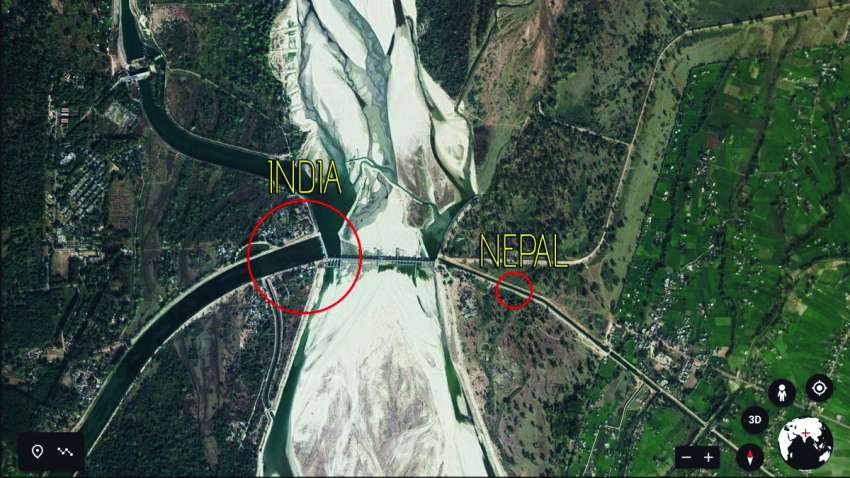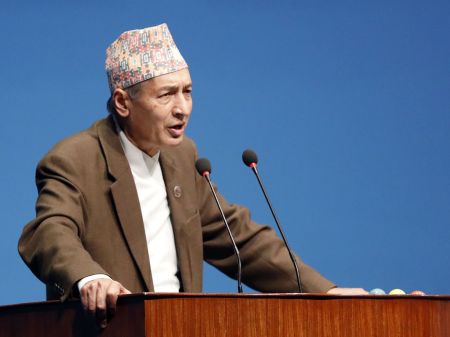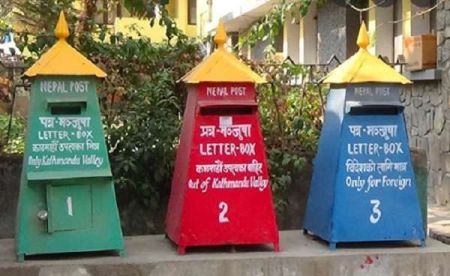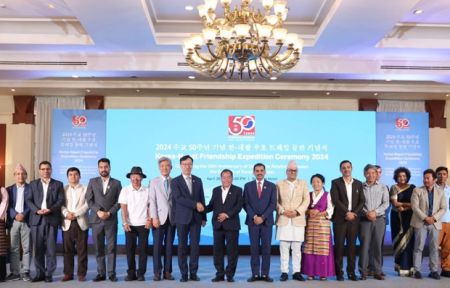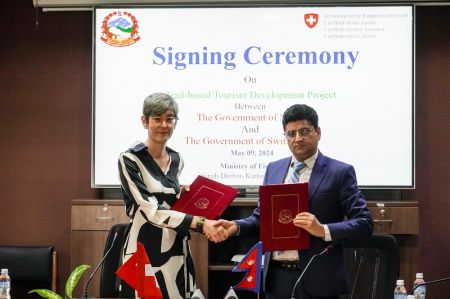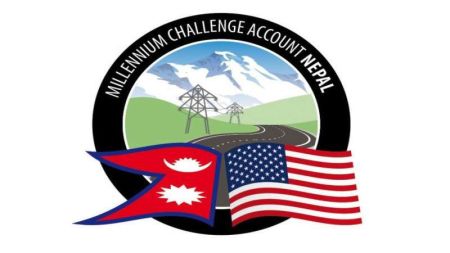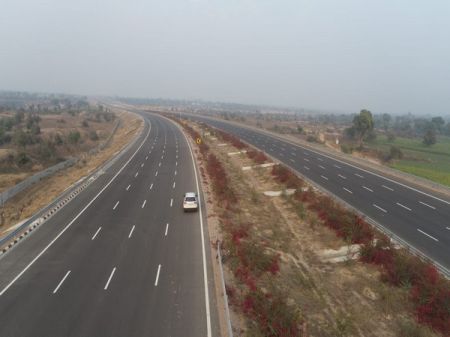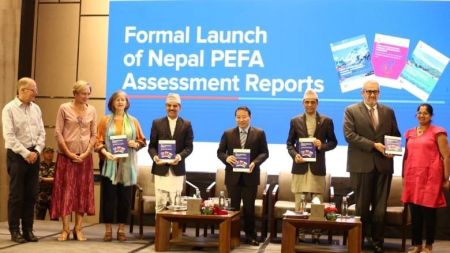BY Rajendra Prasad Adhikary
The governments of Nepal and India signed a treaty known as 'Mahakali Treaty' for the integrated development of Mahakali river which included Tanakpur Barrage, Sarada Barrage, and Pancheshwar Dam Project in February 1996. However, despite nearly three decades since the treaty was signed, there has been no concrete progress toward project execution due to a lack of mutually agreed construction planning, a financing modality based on the equitable distribution of benefits for each country, and a commitment to adhere to the treaty's spirit.
These three water-diverting infrastructures—Sarada Barrage, Tanakpur Barrage, and the proposed Panchswore High Dam project—are situated across the Mahakali River, spanning from its lower to upper reaches. In addition to their role in hydropower generation, they significantly contribute to various uses of Mahakali River water, including irrigation and flood control. To ensure efficient operation, these infrastructures are being evaluated within an integrated water management framework, which considers factors such as water availability from watershed areas and the operational mode of the regulating dam, catering to various water-use sectors.
The high hydropower potential of the project was initially recognized by Indian experts as far back as 1956. Subsequent project studies conducted until 1971 estimated that the potential hydropower production could reach up to 1,000 megawatts. However, with the optimization of dam safety height, the projected potential now stands at 6,480 megawatts when a 315-metre high dam is constructed.
The proposed high dam area along the Mahakali River in Sudurpashchim Province encompasses portions of Darchula, Baitadi, and Dadeldhura districts, spanning approximately 2,380 square kilometres of the drainage area on the Nepal side, accounting for 19.64% of the watershed area. On the Indian side, the drainage area contributing to the dam's storage covers 9,720 square kilometres, accounting for 80.36% of the watershed area. The design calls for a rock-fill dam with a height of 315 metres, carefully considering its location in an earthquake-prone zone and the potential to generate a maximum of 6480 megawatts of hydroelectricity. The dam will include six units of Francis turbines to produce 3,240 megawatts of energy on both sides of the river. The reservoir is designed to withstand a total water volume of 12.26 billion cubic metres, with water levels ranging from a minimum operational level of 615 metres to a normal maximum water level of 680 metres above mean sea level. This configuration yields an annual energy output of 8,216 gigawatt hours as firm energy and 10,671 gigawatt hours as average output.
As two Nepali rivers, Chmaelia and Pamoligad, and four Indian rivers - Saryu, Dhauli Ganga, Gori Ganga, and Ram Ganga - augment the water in the high dam reservoir, this results in inundation of 3,850 hectares on Nepali side and 9,550 hectares on the Indian side.
While a detailed project report with comprehensive cost assessment, investment modalities, construction loan provisions, debt repayment schedules, energy generation consumption, and an evaluation of flood control and other water use benefits has not been publicly disclosed, it is evident that a high dam project of this scale, situated in rugged mountainous terrain, incurs higher costs compared to a similar project in a more accessible plain. Preliminary cost estimates dating back to 1996 suggested a project cost of approximately $23 million, with India contributing 65% and Nepal chipping in with 35%. However, with the project being delayed for nearly three decades, the construction costs of the high dam and associated infrastructure have escalated due to inflation in labour, materials, and equipment costs.
This cost and benefits sharing treaty, based on the principle of investing in proportion to the benefits to be acquired, presents a significant financial challenge for the Nepali economy given its relatively smaller economic scale. To address this, we must explore options such as approaching multinational banks with a convincing loan repayment guarantee or presenting a financial proposal based on successful investment models implemented elsewhere in the world.
At this juncture of project cost financing, it's worth mentioning a compelling example involving two South American neighbouring countries: the small landlocked nation of Paraguay and the larger, industrialised Brazil. They set a remarkable precedent in the realm of water resources development, project development funding, and financing models aligned with cost-benefit sharing in the boundary river Parana.
In 1973, these two South American nations overcame historical tensions surrounding the waters of the bordering river by signing the Parana River Water Cost Benefit Sharing Treaty. They established the 'Itaipu Bi-National Institution' to build and operate the Itaipu Dam, which stands as the third-largest hydroelectric dam globally, generating 14,000 megawatts of clean and green energy—second only to China's Three Gorges Dam with its 22,500 megawatts. Notably, the advantageous aspect for the small, landlocked nation of Paraguay was that the major investment was shouldered by the Brazilian Development Bank. Brazil, in turn, assured Paraguay of purchasing surplus energy at a mutually agreed-upon rate. This arrangement simultaneously opened opportunities for private companies and corporate entities to purchase energy sold by Paraguay.
Given that Paraguay utilises only 10% of its total energy share, while Brazil uses 90% of Paraguay's share in addition to its own, the clearance of construction debt with the Brazilian Development Bank became significantly more manageable once Paraguay started earning revenue from energy sales in markets guaranteed by the Brazilian government.
The Itaipu Dam stands as a remarkable example of cross-border cooperation and infrastructure development, where a major nation extended support to its smaller, landlocked neighbour. This cooperation has resulted in significant benefits for both countries in terms of economic growth, employment generation in industries with zero carbon footprint, and sustainable development through biodiversity conservation in the reservoir and the surrounding wetlands. Since its inception in 1984, the dam has generated over 2.91 billion megawatt-hours of clean energy.
The prolonged delay in the execution of Mahakali Treaty, the consistently slow progress in preparing a mutually agreeable detailed project report, and a lack of enthusiasm at the political level to align with the spirit of the treaty represent a direct economic loss of a potentially viable 12,333 gigawatts of power annually. This annual power production could have greatly benefited both countries. Without the construction of the dam and storage reservoir, only India continues to reap the benefits of the unhindered free flow of water from the Mahakali River, while Nepal endures yearly disastrous flood damage during the monsoon season.
As India strives to position itself as a powerful nation on the global stage within the next 20 years, the need for green energy, industrialization, and the promotion of environmentally friendly water resource development projects has been prioritised as part of the Indian government's commitment, demonstrated in various climate change conferences. In this global competition, industrialization with a minimal carbon footprint has become a hallmark of a globally responsible country like India.
Despite India's prominent role in international forums like G20 and BRICS, its current diplomatic efforts have not resolved the persistent border line disputes along the Line of Actual Control or established clear water rights for the Brahmaputra River, benefiting both India and Bangladesh, as well as the diverse aquatic flora and fauna that once thrived in the natural flow of the Brahmaputra before the construction of storage dams in the Tibetan region.
Given that major Himalayan rivers receive snow-melt water from the Hindu Kush Himalayan mountains, it is imperative that internationally recognized water rights principles are upheld by all countries sharing these waters, regardless of their size or economic strength.
In this critical context of transboundary water sharing, the execution of the Mahakali Treaty at the government-to-government level, ratified by parliamentary bodies, along with the construction of the Pancheswore High Dam for purposes such as green energy production, drinking water supply, irrigation, biodiversity conservation, and environmental preservation, can yield numerous tangible and intangible social, environmental, and economic benefits. These benefits would extend not only to the people of India and Nepal but would also have far-reaching spillover effects throughout the South Asian region.
The longstanding and deeply rooted people-to-people relationship between Nepal and India would further flourish with substantial projects of regional economic significance. This project can be an exemplary model of sustainable water resource development along the bordering river between two neighbouring nations on either side of the Mahakali.
(Adhikary is an engineer and served Nepal government in various high level capacities.)


